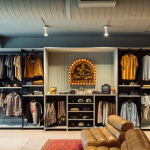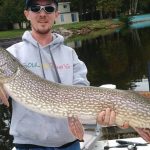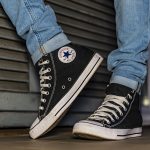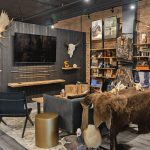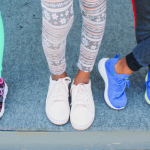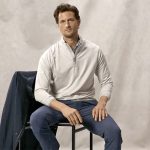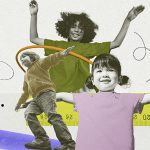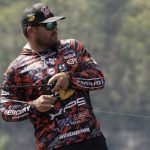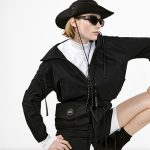As consumers and analysts feel like they are beginning to see the end of the recession, spending on outdoor footwear, apparel and equipment seems to be turning around. Like many metrics recently cited by economists, the retail point-of-sale data compiled by SportScanINFO is showing a market that is “less bad” than it has been in nearly a year.
Outdoor equipment, apparel and footwear sales declined in the mid-single-digit range during the retail fiscal second quarter of 2009 ended August 1 when compared to the same period last year. However, most of these declines came from slow sales in May and June while July sales were essentially flat. In fact, all three major categories footwear, apparel and equipment saw sales that were substantially better in July than they were in the previous two months of the quarter. While Julys data is promising, many outdoor specialty retailers are waiting for the back-to-school sales and the tax-free weekends scattered throughout the country to conclude before anyone will say a turnaround is underway.
Sales of outdoor equipment in the channels tracked by SportScanINFO declined in the high-single-digit range during the second quarter. However, looking at July, sales were only down in the low-single-digits. The sales declines were relatively widespread, but low-ticket items like accessories performed particularly well across the board. The trend for consumers has clearly shifted towards upgrading existing gear with a minimal investment into accessories. This trend negatively impacted the Packs and Bags market heavily and was compounded by sharply declining sales in the recreational travel market. Nearly every category of Bags and Backpacks declined during the second quarter while Pack Accessories were up in the double-digits. The lone exception to the slowdown in pack sales was Technical Waist Packs, which saw a strong increase during the quarter.
Camping and Backpacking Equipment saw a low-single-digit decline during the quarter, but this was caused almost exclusively by declines in lower price-point, lower quality car camping equipment. For example, sales of 4+ person Family Camping Tents are down in the double-digits for the quarter. However, looking at the same product at price points over $250, sales are up considerably over last year. Consumers are clearly looking for high quality camping gear, and they are willing to pay for it.
More technical backpacking equipment is also seeing strong increases in sales for the quarter. All sizes of Backpacking Tents are showing increases, as are Mummy Bags, Sleeping Pads, and Water Purification equipment.
Sales of Water Bottles continue to increase rapidly, benefiting from the consumer trend away from pre-bottled single-use water. Drinking a high-priced, name-brand mineral water may have been a status symbol over the last decade, but the new status symbol is drinking filtered tap water out of a stainless-steel bottle.
Paddlesports sales were down a little over 1% for the quarter. The trend in this market is similar to the camping market — consumers are looking for higher quality equipment and they are willing to pay for it. The vast majority of the sales declines came from slowing sales in low-priced Recreational Kayaks and Canoes. Higher priced Touring, Whitewater, and Sportsman-oriented boats sold well, with strong increases for the quarter.
Outdoor Apparel was the only major category to show an increase during the second quarter when compared to the same period last year. However, much of this increase was caused by sales of higher price-point Rainwear and Outerwear instead of traditional spring/summer apparel like Shorts and T-Shirts. Overall, Outdoor Apparel sales increased in the low-double-digits but Spring/Summer Outdoor Apparel was down in the low-single digits while Outdoor Outerwear was up in the high-double-digits.
Outerwear sales were up in all categories Bottoms, Technical Jackets, Rainwear, and Vests. Sales were likely spurred by abnormally wet weather throughout much of the Northeast, Southeast and the Rockies.
The increased sales in Outerwear and decreased sales in Spring/Summer merchandise may present a problem for some retailers aging inventories. The end of the summer selling season is quickly approaching. As soon as back-to-school shifts into full gear, consumers will be thinking of denim and fleece, not shorts and tees.
Outdoor Specialty Footwear sales were down just over 1% for the retail fiscal second quarter ended August 1. This decline was primarily caused by a mid-single digit decline in sales of Sandals. Excluding Sandals, Outdoor Specialty Footwear sales were flat for the quarter.
While Sandals are traditionally strong in the second quarter, this year was difficult due to the aforementioned abnormally cool and wet weather. Every category except Flip-Flops showed weaker sales in the 2009 second quarter compared to Q2 of last year.
The weakness in Sandals was partially offset by strong sales in several more performance-oriented outdoor categories. Performance Trail Running, Light Hiking, and Approach/Multi-sport footwear all saw high-single-digit increases for the second quarter. Outdoor Casual footwear was the strongest category with a high-teens increase in sales. SportsOneSource analysts feel that a major shift towards brown shoe and outdoor casual footwear is on the horizon.
Another trend in footwear that is quickly gaining momentum is in a new category – Toning/Shaping/Wellness footwear which includes some outdoor brands like Earth Footwear and MBT but also brands like Skechers and Reebok. This category is defying all expectations and projections for its size by the end of the year are revised upwards every week.
While the second quarter of 2009 was clearly difficult for the outdoor industry, there are several distinct opportunities in every category. In addition, the improved performance in July offers a bit of a silver lining to a year that, to date, has been the worst in recent memory.

